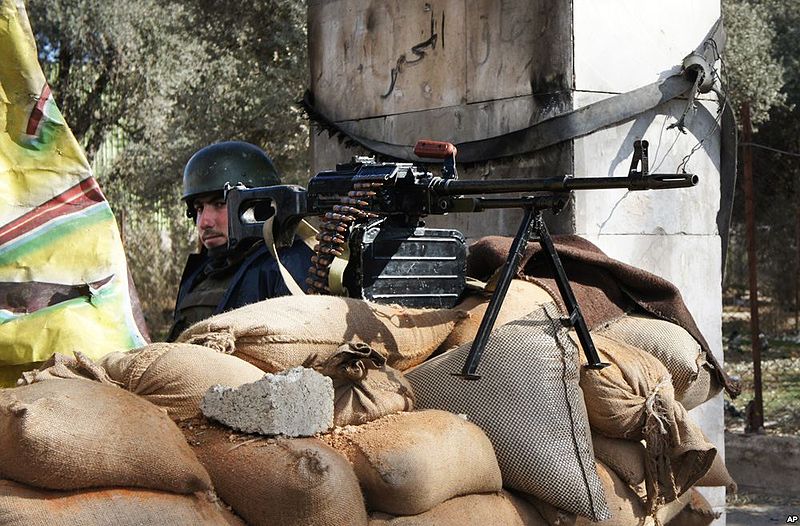
What the United States Faces in Syria
Over the past month there has been a major change in the tempo and strategic environment of the Syrian Civil War. The acceleration of the conflict can be traced back to the bombing of a Syrian security forces meeting on July 17th that killed a number of Bashir al-Assad’s key security aids. This was followed by heavy rebel activity in the suburbs of Damascus, that until recently had been quiet and unaffected by the fighting. A few days later, on the 23rd, Syrian Foreign Ministry spokesman Jihad Makdissi stirred up controversy by saying that Syria would use its extensive chemical weapons stockpile against foreign intervention.
In the wake of the bombing and increased rebel activity, the Syrian military has embarked on one of the largest operations of the conflict, converging on Aleppo, in an effort to take back the city.
While the conflict is intensifying, Assad’s government and military is still currently dominant in firepower and manpower. Even the defection of the Sunni Prime Minister, Riad Hijab, as well as a number of high and mid-level officials, has not seriously affected the inner workings of the Syrian government.
Crucially, Assad still retains the vast support of the Alawite and Christian community, which keeps his military and regime intact, long after other leaders have fallen in the wake of the Arab spring. Syria also receives financial and military support from Iran, and diplomatic cover from Russia in the UN, which deflects major sanctions.
However, after nearly 16 months of conflict, the rebels have proven to be quite resistant to the military’s attacks. Weapons that the Syrian military anticipated turning on Israeli forces, attack helicopters, jets, and heavy armor, have so far matched poorly against the rebel’s tactics and arsenal, which is increasingly including IEDs.
While struggling to hold onto larger cities, rebels now control wide swaths of the countryside and travel openly without resistance from the Syrian army or militia forces. The conflict has now become a game of “whack-a-mole,” as the government squashes one area of opposition another area rises up, says The Economist.
The support of both Western and Arab powers has been instrumental in improving the capabilities of the rebels through non-lethal aid. With medical and communications aid from the United States and United Kingdom, and intelligence support from Turkey, Saudi Arabia, and Qatar, the rebels have been able to pull off major strikes like the one on July 17th. The rebels are also gaining strength from defections of Syrian soldiers and officers, but they are still outmatched in numbers, command and control, and heavy weapons. Thus, the rebels are able to sometimes capture territory, but not hold it.
They have also remained fractured and locally-oriented, using the umbrella of the Free Syrian Army to obtain funds and weapons. Despite these disadvantages, the rebels have shown improved tactical coordination and wherewithal, massing in Aleppo and retreating from Damascus when it was clear they could not defend it.
Even though Western non-lethal support has improved the rebels’ capabilities, it is reportedly not enough. The lack of weapons and ammunition has forced some rebels to seriously consider accepting aid from al-Qaeda units operating in Syria, not out of ideological reasons, but to take advantage of their supplies. This has echoed other assessments of al-Qaeda’s operations in Syria made by The New York Times, The Brookings Institution, and Foreign Policy. RAND has also suggested that al-Qaeda’s role in the Syrian rebellion is small but its strength is increasing due to al-Qaeda in Iraq’s provision of bomb-making specialists, weapons, and money to its compatriots in Syria.
However, on the ground reporting is difficult, and as this article in Der Spiegel describes, the power and extent of al-Qaeda in Syria may be exaggerated. Regardless of the current power of al-Qaeda in Syria, it is clear that some elements of the group are operating in Syria. The opportunity for al-Qaeda in Iraq to expand its operations and influence into Syria is too good to pass up.
Already the conflict has seemed to become, at least to those in Syria, a bloody sectarian rather than anti-Assad conflict and one that pits Sunnis against Alawites and Christians. The longer the conflict endures, “the deeper will become the sectarian fissures and the harder it will be to reconstitute a unitary Syrian state afterwards” according to Robert Danin of the Council on Foreign Relations. A longer conflict also allows al-Qaeda and other terrorist organizations to push for a larger role in the civil war, enhancing their power and affecting the post-Assad transition.
A larger issue in this rebellion is the nature of the oppositions groups that have thus far been unable to create a cohesive opposition group. The largest three groups, the Syrian National Council (SNC), National Co-ordination Committee (NCC), and the Free Syrian Army (FSA) have limited working relationships, inhibiting the creation of an effective political-military front and effective command and control of captured territory. The SNC opened a bureau in March that would attempt to function as a defense ministry, but the FSA has thus far refused to work with the new organization.
Better coordination between the three groups will improve the opposition by creating a quasi-government-in-exile that can be responsible for both diplomacy and warfare. It is imperative that these groups start working together in order to fill the eventual power vacuum that will result from the complete collapse of the Syrian Government. Optimally, there should be an establishment of a Libyan National Council-type group that is able to engage in international diplomacy. But unlike Libya, high-level diplomats and government officials have not defected in great numbers, which has hamstrung the SNC in international affairs and support.
Additionally, the SNC have thus far been unable to integrate Shiites, Christians, Druze, or Alawites into the council, leaving it looking like a “Sunni” organization rather than a “Syrian” group. This lack of plurality, along with rebel attacks on Christians and Shiites, makes the rebellion look increasingly sectarian; pitting the Sunnis against everyone else. Attacks against minority groups, regardless of if they support the embattled government, pushes the minority population away from the rebellion and deepens sectarian conflict.
Finally, Syria has one of the most advanced and largest chemical weapons stockpiles in the world. The country reportedly has the ability to produce nerve agents VX, Sarin, and Tabun as well as mustard gas. Preventing these weapons from falling into the hands of terrorists or proliferating around the Middle East will be a monumental challenge should the rebels succeed in toppling the government.
Syria’s chemical weapons stockpiles are a product of decades of development and are guarded by Assad’s best troops and anti-aircraft missiles. They are scattered throughout the country, and some facilities are almost completely underground. Luckily, the chemical weapons are believed to be stored in binary form, meaning they would have to be combined in the correct proportions before being loaded into a warhead.
This means that theoretically, the United States may be able to destroy these weapons from the air where there is little danger of collateral damage or risk spreading a precursor chemical. However, the binary form of these chemicals makes them easier to transport and handle because the precursors of these weapons range from non-toxic (in the case of VX) to moderately toxic (in the case of Sarin).
But this raises another pressing issue: How to destroy or remove the chemical weapons without outside intervention that could prompt their use. If the rebels are unable to properly and safely secure the sites (assuming they can even be trusted to do so), a foreign military may be needed to secure and destroy the weapons.
These concerns will only become more pressing as the conflict intensifies and the Assad regime starts to fall apart. With support from outside powers, the rebels will continue to gain competency and will be able to confront and defeat the Syrian Army. Assad will be unable to hold on forever. When he does fall, the United States will have to deal not just with a precarious future Syrian state, but countering possible al-Qaeda elements in the country in addition to preventing the proliferation of WMDs.

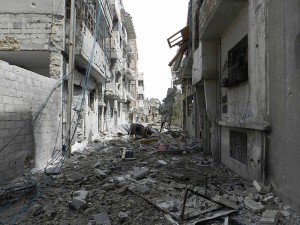
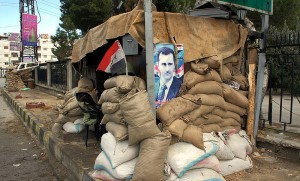
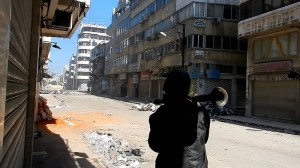
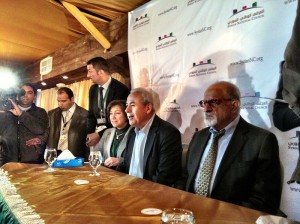
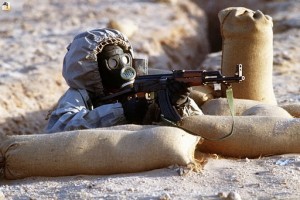
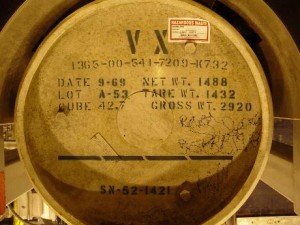





[…] What the United States Faces in Syria […]